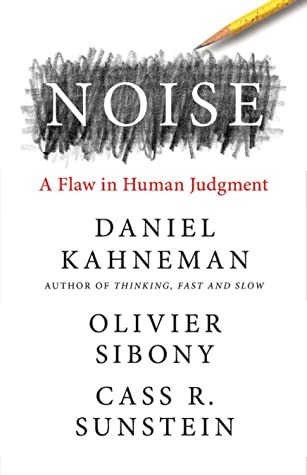Imagine a world where a patient goes to a clinic and gets prescribed highly addictive opioids because it is the end of the doctor’s long day – or that different sentences are given to people who committed the same crimes because one judge hasn’t had lunch yet.
These are some of the many real-world examples of “noise” that are mentioned in Noise: A Flaw in Human Judgment by renowned psychologist and winner of the 2002 Nobel Prize in Economic Sciences Daniel Kahneman. Noise is the follow-up to his previous book Thinking, Fast and Slow, released in 2011, which brought attention to his work on how cognitive biases shape judgment. In Noise, Kahneman and his co-authors, Oliver Sibony and Cass R. Sunstein, explore the other type of error impacting our judgments: noise.
The book follows the premise that “wherever there is judgment, there is noise – and more of it than you think”. If noise is so prevalent, why is it not widely spoken about? Kahneman notes that noise can only be identified in statistics, making it more difficult to track, which means it tends to go unnoticed and unmentioned.
Noise is broken up into six parts. It begins with the difference between noise (random scatter) and bias (systematic deviations), the nature of human judgment and how to measure accuracy and error. It also goes into predictive judgment, human psychology and the causes of noise, how to improve judgments and prevent error, and what is the right level of noise.
Who knew that important decisions could be swayed by seemingly redundant factors? Such as who spoke first in the meeting, what day of the week it is or whether the local football team won last night’s match. Many different types of noise are discussed in the book, but the most significant one, Kahneman says, is system noise. System noise is unwanted variations in judgments that should be uniform, creating “noisy systems”. Using the judicial system as an example, you would expect a sentence to reflect the crime and not the judge that hears the case.
It is mentioned that although a professional basketball player performs the same moves every time they shoot a free throw, they can never guarantee to make the shot. Judgment is like a free throw, no matter how hard you try to repeat it you will never get an identical result due to noise. In an effort to combat this, the concept of applying rules and algorithms is used to show that even simple rules, as well as machine learning algorithms, can be used to improve accuracy and almost always outperform human judgment. This is proven in an example in which a noise-free model of a judge can make decisions with greater precision than the actual judge.
It is mentioned in Noise that many experts ignore the advantages of rules and algorithms, instead, favouring their judgment. Using statistics, the authors show that rules and machine learning greatly improve judgments by limiting noise, as well as bias, and state that we should aim to make use of them in our everyday decision making. Leaders and decision-makers should take the advice presented in Noise and utilise rules-based frameworks and artificial intelligence to help make better judgments.
An excellent takeaway for leaders to apply to their decision making is to resist premature intuition – the gut feeling that you know the right decision even when you are not sure why you know. In situations where time permits, judgment based on intuitive feelings needs to be disciplined.
The book combines numerous stories, studies and statistics from various universities to highlight the cause and effects of noise. Sometimes it can be quite in depth when going through statistics and the psychology of judgment, which the authors recommend skipping over if you are predominantly interested in the applications of noise reduction. They also provide breakdowns of the chapters; highlighting their purpose towards the subject. I appreciated the use of quotes at the end of each chapter which acts as a summary of the key points mentioned.
Noise: A Flaw in Human Judgment is quite long and detailed and the shifts in writing styles make it a demanding read at times. Despite this, every leader and decision-maker should at least read certain parts of the book that emphasise the effects of noise in decision making and how to reduce it. By applying the insights in Noise, leaders will be able to make more ethical and fair decisions that could very well save lives, time, and money.
About the Author: Nathan Woodcock is a first-year midshipman studying Electrical Engineering at the Australian Defence Force Academy.

